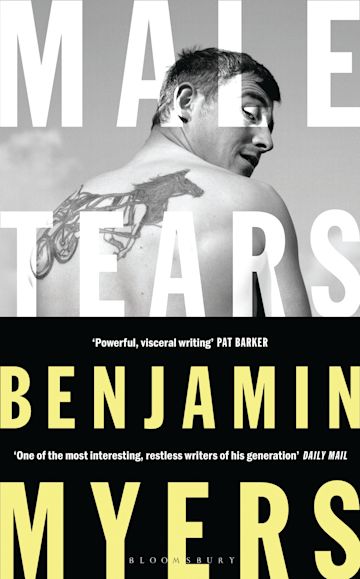MALE TEARS
Benjamin Myers
Bloomsbury
REVIEWED BY PETER STUPPLES
Male Tears is a collection of his short stories, previously published in a variety of small presses from 2014-18.
The focus is on the male psyche - aggressive, violent, destructive on the one hand, but on the other tragic, a victim of its own aggression, of its inventiveness of machinery and weaponry, a destroyer of the relationships it craves. The ‘‘tears’’ of the title alludes not only to weeping but also to tearing, pulling apart. The overall mood is one of a Gothic, depressive, even suicidal, darkness.

The stories vary in length; a couple cover only two pages, others stretch to 20 or more. Many are set in the present, but others go back to an Iron Age primitive Britain, which seems to be the lodestone of Myers inspiration.
In ‘‘A Thousand Acres of English Soi’, a boy discovers an old gin trap in a rubbish tip: ‘‘There was something malevolent about the contraption. Years in the soil had not robbed it of its potential for violence. The boy felt the danger just holding it in his hands while alone there in the wood. But he felt exited too.’’ Later in the same story the boy’s father, working a mechanical potato picker, falls into his own machinery, shredding the lower half of his body. He dies, howling like an animal.
In ‘‘Vienna (The Hunters in the Snow)’’ the author visits an exhibition of the work of Pieter Bruegel the elder in Vienna, where his imagination becomes absorbed into the painting ‘‘The Hunters in the Snow’’. The report fades into a story about the three hunters of the painting entering the deep forest.
Having become consumed by his own imagination whilst looking at the painting, surrounded by a pressing crowd of consuming tourists, the man starts to sweat, to panic and falls to the floor of the gallery surrounded by strangers speaking languages he cannot understand. He slowly recovers, assuring the anxious faces surrounding him that he is all right, giving the thumbs up: ‘‘I take a seat and they gradually drift away, one or two of them looking back at me, conferring, then carrying on into the next room.’’
The 18 stories are uneven, the subjects not always handled with the same degree of intensity. The longest, and last in the collection, ‘‘Snorri and Frosti’’, is a series of interchanges between a couple of retired Scandinavian men, grappling with problems of confronting the modern world. It is an over-long tale that detracts from the quality of the collection as a whole and highlights the weakness that can be found, from time to time, in other stories - a tendency to start with an interesting idea but then gradually to lose the thread, to wander, to fail to bring together the points with which the story began into defining conclusions.
Peter Stupples, now living in Wellington, used to teach at the University of Otago











